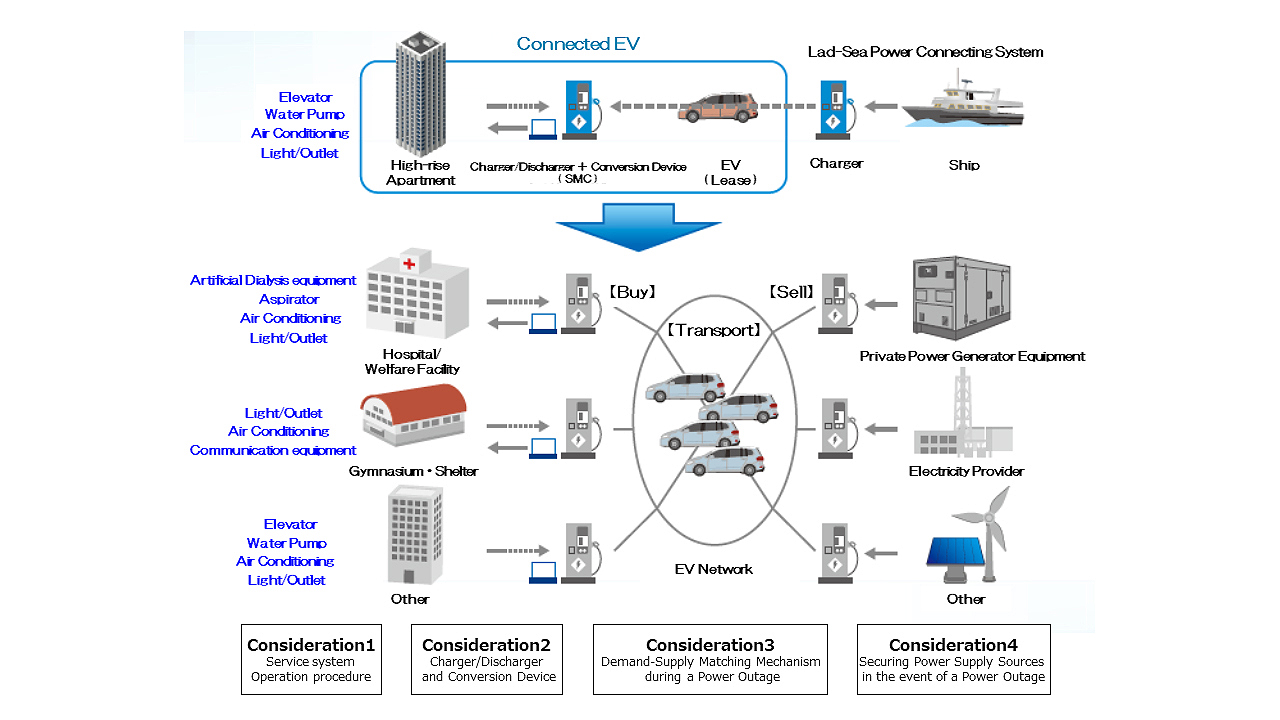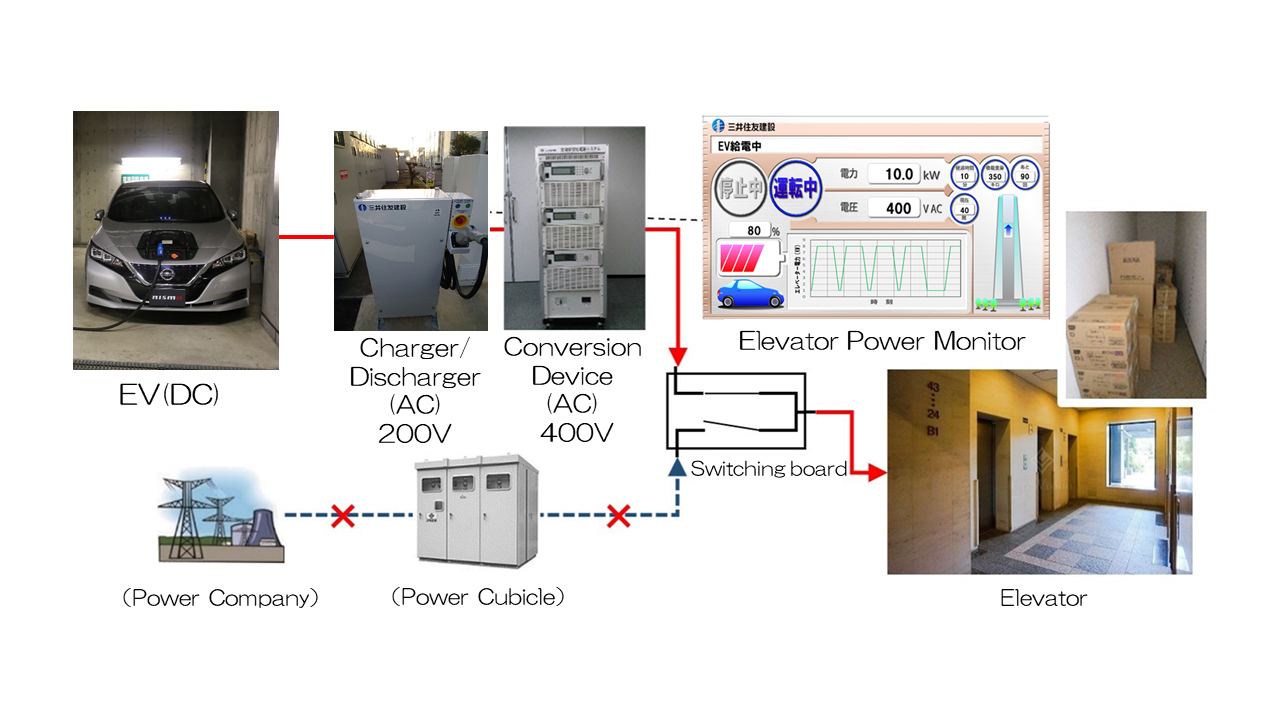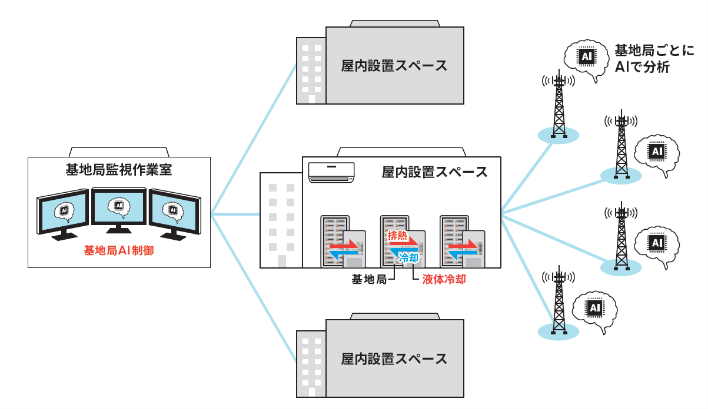Dissemination of the Connected EV System
Sumitomo Mitsui Construction Co.,Ltd.
Outline
The Connected EV System (hereinafter called as “the System”) is a system that makes the power of an electric vehicle (EV) available in buildings by converting DC power obtained from the EV into AC power which can be used for elevators, water supply pumps, etc.
With this system, during normal times, it is possible to supply electricity from the EV to the building power supply, thus suppressing the peak power of the building. During blackout, EV power can be used as an alternative to emergency generators. In addition, it will be possible to form a next-generation power infrastructure network in cities that uses EVs as the off-line power supply means.
As a method of supplying electric power to EVs during blackout, we will collaborate with the “Land-Sea Power Connecting System” (our joint research with Tokyo University of Marine Science and Technology), which enables the use of ships to exchange power between ships and land.
Description
1. Goals
To acquire a facility certification for the facility which uses the EV power supply as one of the building power supplies, and disseminate the System to various buildings such as houses, office buildings commercial facilities and so on. We will make it possible for the power users to select EVs for building power supply through network system. This will introduce new power infrastructure network of the next-generation to cities where EVs will be used as means of power transport, thus promote more reliable transport of renewables and facilitate the introduction of renewable energy.
2. Challenges to be overcome and our practical countermeasures
1) Power supply to the power supply destination (building):
We will install the System to buildings so that EVs can supply power to the building power systems. With this, during normal times, we can supply the power to the users from EVs directly, enabling to suppress the peak power of the buildings. During blackout, power shall be supplied from the EV to the building equipment to maintain the functions of the building. The service systems and operation procedures shall be developed.
2) Installation of equipment related to the charger / discharger:
The charger / discharger and the DC-to-AC converter shall be downsized to secure the installation space in the building while reducing the cost as minimum as possible.
3) Construction of the system related to EV network:
Optimize the matching between the power supply source (EV owner) and the power supply destination (building owner) during normal times and also at blackout. The software for this matching optimization shall be developed.
4) Development of procurement system related to renewable energy:
Select a nearby power plant related to renewable energy as a power supply source. In addition, appropriate environment shall be developed and maintained for charging EVs and transporting electric power.
3. Benefits of the dissemination of the System
Reliable source of renewable energy will be secured by EVs. In addition, we will spread buildings that can cope with blackout in the event of a disaster. We will also make it possible to reduce costs which will be required to suppress the power demand.
Supplementary information
YouTube public animation
https://youtu.be/ECJF0yeaWUw
YouTube public video
https://www.youtube.com/channel/UCRPp6_htaHbuQo6R9HcQlIA
Our public relations website
https://www.smcon.co.jp/topics/2018/09031409/
Similar Innovation Challenges
Accelarating the penetration of renewable energy resources with “Open Energy System”
Sony Group Corporation
Achieving net-zero carbon emissions from plant factories using full artificial lighting
Taikisha Ltd.
Advanced technology for buildings providing energy-saving and comfortable indoor environment (under Net Zero Energy condition)
Mitsubishi Electric Corporation
AI control reduces base station power consumption by up to 50%
KDDI CORPORATION








